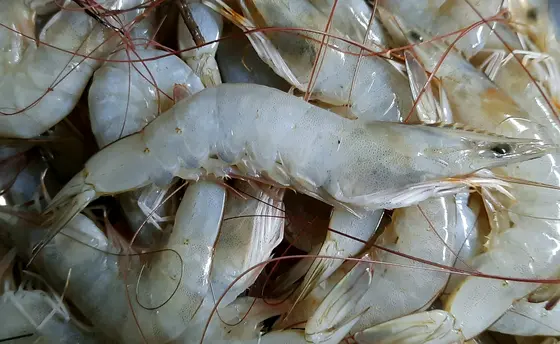Was the salmon for dinner with friends really caught wild or did it come from aquaculture? What to make of the alleged “biolabel quality“ of the shrimp for the seafood salad? And was the chicken for the Sunday roast really allowed to spend its life in the open air?
Food analysis laboratories can only answer such questions to a limited extent. They usually require time-consuming tests that combine several different assays. A team led by Frank Lyko of DKFZ, together with colleagues from the chemical company Evonik, is now presenting a possibly simpler solution. Their new approach: they analyze the characteristic fingerprint of chemical markers on the genome of animals.
“The question of the origin of food is increasingly becoming a purchasing argument for consumers-especially when it comes to animal products and thus also tot he well-being of animals,“ says Lyko. “We have now established an amazingly sensitive detection method that maps many of the environmental factors that are relevant to animal well-being.“
Our genetic material, DNA, is studded all over with millions of chemical markers. These are so-called methyl groups that perform important biological functions. They decide which genes are translated into proteins.
In contrast to the lifelong stable sequence of DNA building blocks, the methyl labels can be reattached or removed again. This happens in adaptation to biological requirements. In humans, for example, the methyl pattern, the so-called “methylome,“ changes in the course of disease or age. The totality of these reversible control elements on the genome is referred to as epigenetics.
The influence of environmental factors on the methylome is not always easy to prove. Frank Lyko's laboratory at DKFZ has found an ideal model organism in the marble crayfish to gather comprehensive expertise on this question: “All marble crayfish have an identical genome, which means they are a single clone. Therefore, the study of environmentally induced changes in the methylation pattern is not falsified by deviating genetic factors,“ explains biologist Lyko.
For the methylome analysis, the researchers use a special DNA sequencing technique that allows them to identify each methylated DNA building block. Lyko and colleagues were thus able to unambiguously identify marble crayfish populations from different parts of the world. They were able to distinguish animals from clean or eutrophic waters or from laboratory husbandry. The researchers were also successful in tracking the time course of the adaptation of the methylation pattern when switching between two types of husbandry.
Encouraged by these unambiguous results, the team successfully extended the methylome analyses to animals that are part of the human diet. They conducted this project in collaboration with colleagues at Evonik.
The researchers were able to distinguish shrimp from different rearing facilities. The methylome of salmon from slow-flowing rivers differs from that of their conspecifics that lived in mountain streams. In chickens, the farm and its feed supply affected the pattern of methylation. “The environmental and living conditions leave a specific fingerprint in the methylome of all organisms studied. This turns out differently in a free-range chicken than in a factory farm,“ says Frank Lyko.
“Methyl fingerprints could expand the possibilities of food analysis as an important biomarker,“ says DKFZ researcher Sina Tönges, one of the study's authors. “However, sequencing as we applied it in this study is a laborious procedure that cannot be routinely performed in food analysis. We are therefore working with Evonik to develop a test system for methylome fingerprinting that can also find its way into laboratories on a broad scale.“
Geetha Venkatesh, Sina Tönges, Katharina Hanna, Yi Long Ng, Rose Whelan, Ranja Andriantsoa, Annika Lingenberg, Suki Roy, Sanjanaa Nagarajan, Steven Fong, Günter Raddatz, Florian Böhl and Frank Lyko: Context-dependent DNA methylation signatures in animal livestock.
Environmetal Epigenetics 2023, DOI: 10.1093/eep/dvad001
